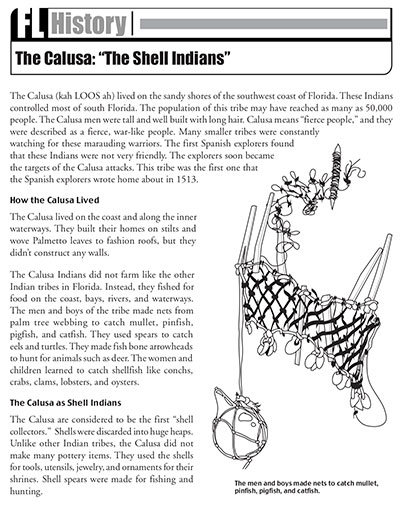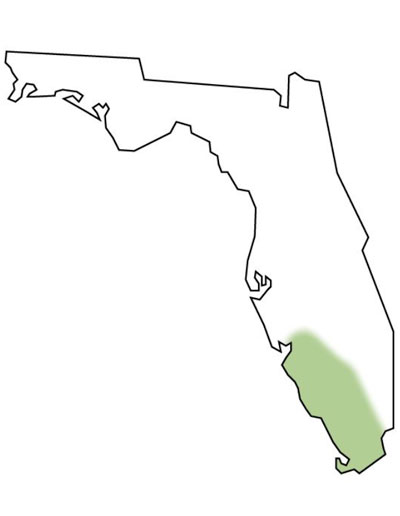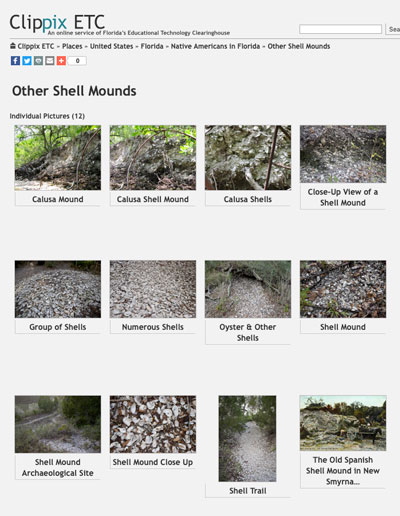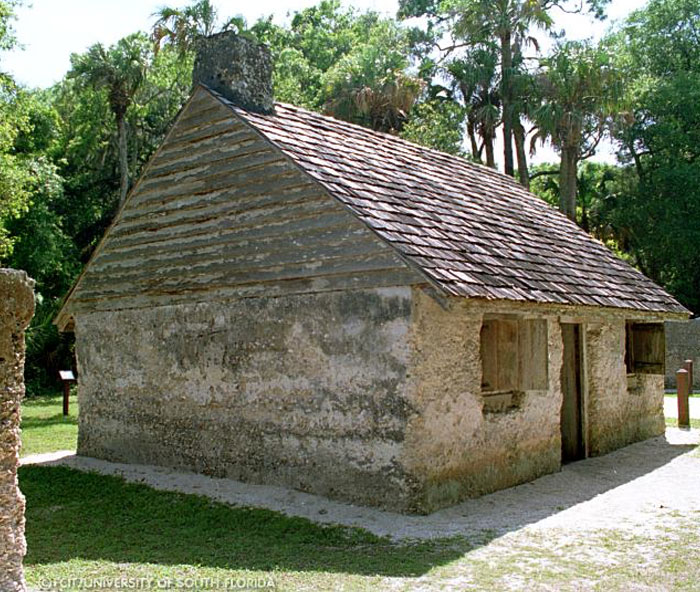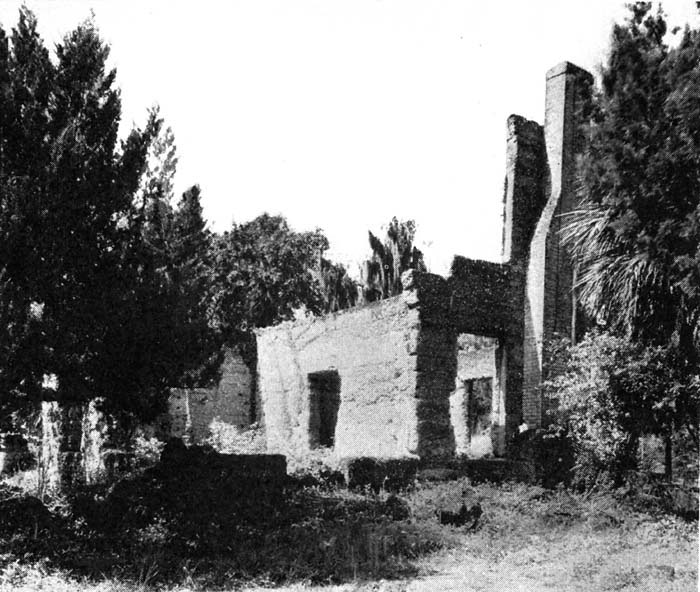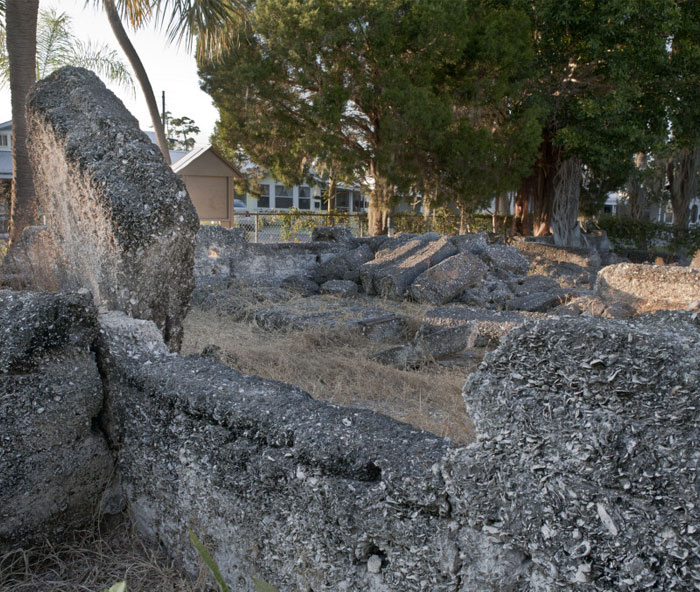
This trace-based case is focused on the mysterious mounds that have been found in Florida In this case, we are beginning with artifacts—mounds—to piece together the everyday lives of the early inhabitants of the state. Then, after examining the past, we will look at today and compare/contrast the ways in which the early inhabitants used resources and discarded the waste in mounds, looking at the similarities and differences. For example, why do we build mounds today? What is in those mounds? What are similarities and differences between the ways in which the early inhabitants discarded their waste and how we discard our waste? Finally, as an extension, have students consider some of the current issues with garbage in Florida and discuss the implications for a more sustainable future..
In a trace-based case, begin with a trace of history, like an artifact, photo, painting, or other visual text. In this case, begin with a photo of a Calusa shell mound found at the Estero River. Ask students: What do you see in the image? (evidence) What do you read in the caption? Then we begin to ask more descriptive questions about the trace.
Mangroves near the remains of a Calusa shell mound at the Estero River.
Step 1: Descriptive Questions
We begin with some descriptive questions. These evidence-based questions provide background information to help students contextualize. However, rather than assigning these questions, work on them together with some group activities that involve a variety of sources, including: artifacts, photos, paintings, maps, charts, graphs, and written primary and secondary sources.
Ask students what they see (this is evidence in the photo and caption).
Ask students what they think (this is how they make inferences based on the photo)
Ask students what questions they have.
Work together to create a basic context, answering the following:
-
- What were the mounds?
- Where were they found?
- When were they created?
- Who created the mounds?
Provide them with the following sources and ask them to find answers to basic descriptive questions first about the Calusa shell mounds.
Step 2: Analysis Questions
Next, students search the documents to discover more about the mounds or middens. They should understand that the middens are old dumps for domestic waste, which may contain things like shells, animal bones, human excrement, and other artifacts and eco facts associated with human living.
Using the materials above, now have students answer higher level analysis questions like:
-
- Given that the mounds or middens were dumps for household waste, what do you think they found in those mounds?
- Why were these mounds created?
- How did they get so big?
- How did the shells get from the water to the mounds?
Step 3: Evaluation Questions
Evaluation questions considers implications, solutions, conclusions, or recommendations. For example, we can consider questions like: What next? What now? What else? What if?
1) What next? Now examine this postcard from the 1920’s. What is happening?
“New Smyrna, Florida. Old Shell Mound. This is one of the immense piles of shells, twenty feet high, which are now mined to form the beautiful shell roads so prevalent throughout Florida.” Postcard published circa 1920s by Hugh C. Leighton Co., Manufacturers, Portland, ME., U.S.A. #26491.
Another use of the material from shell mounds was in the making of tabby concrete. Examine photos of these two Florida sites that included tabby construction.
Gallery of photos of the Kingsley Plantation. Notice the use of tabby construction in the barn and slave cabin photos.
1930 photo of Braden Castle ruins.
Gallery of recent Braden Castle photos showing tabby construction in the fallen walls.
Today, many people think we should preserve these mounds or use them for archeological purposes, to discover more about the people of the past. What do you think? Was the re-use of the mound material a destruction of important archeological sites or an environmentally-responsible example of recycling and reusing?
2) What now?
What types of mounds do we create today? Look about your classroom and examine the contents of the garbage. Consider the waste we produce in the cafeteria. Consider the waste we produce at home. What is the difference between the waste produced in the past and the waste produced today?
3) What else?
Have students examine these artifacts, readings, and maps about other early inhabitants of Florida. How and why did they create mounds?
Images of Mounds:
Reading Passages:
Maps:
Photos:
Florida History: DBQs and Text Sets
Dr. Deborah Kozdras has worked with students from K-20 and now provides professional development and creates curriculum for K-12 educators at the University of South Florida Stavros Center.
FCIT Newsletter
Each month FCIT publishes a newsletter with short articles on teaching and learning with technology, using digital content in the classroom, and technology integration. Subscribe today! The subscription form will open in a new window. When you have subscribed, you can close the new window to return to this page.


